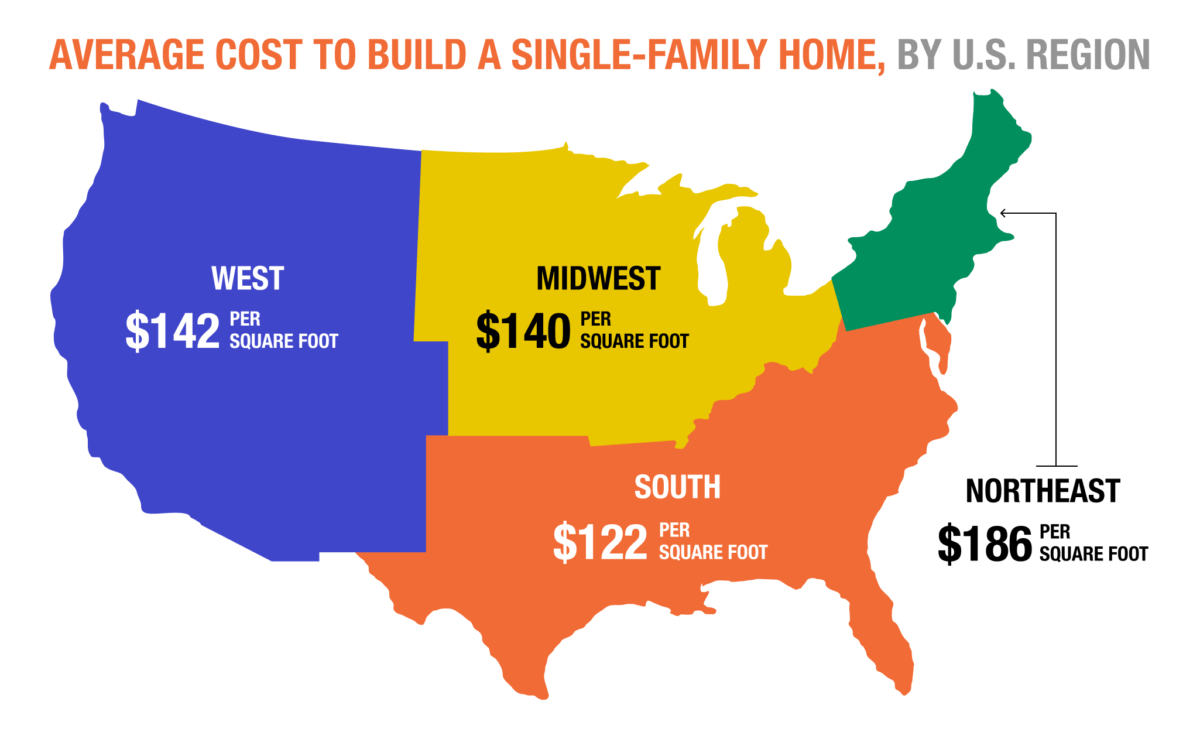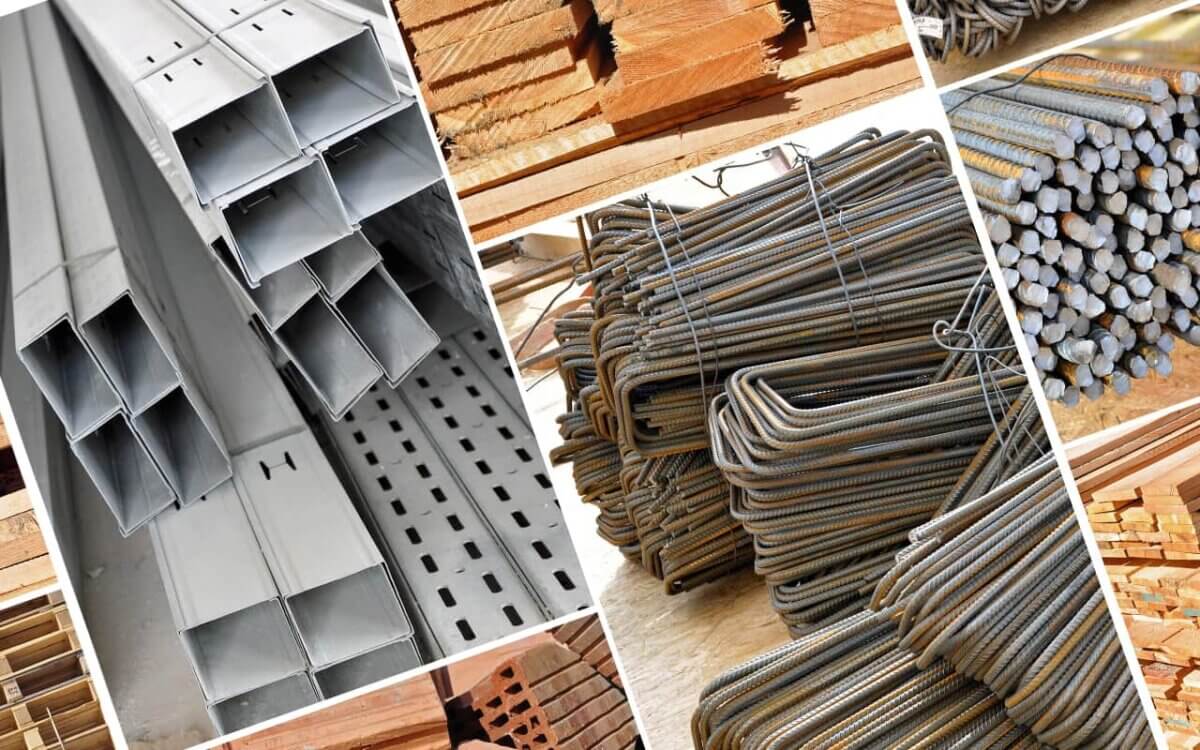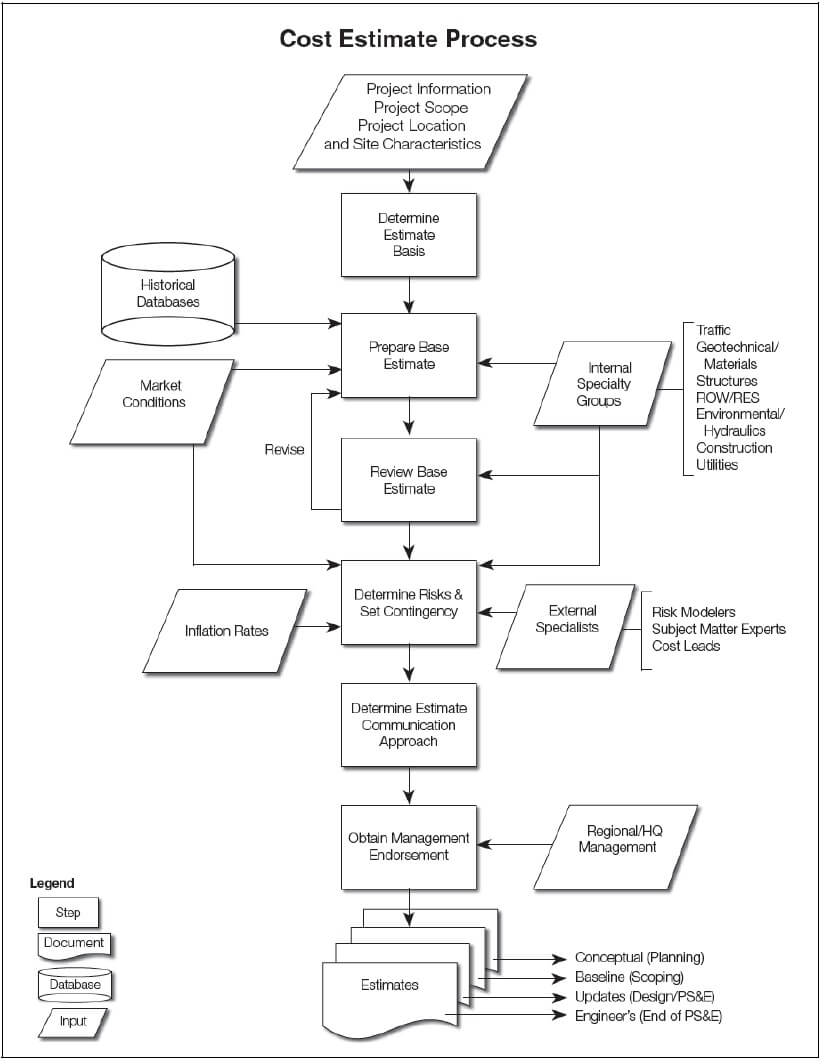Building a brand new house is an exciting journey, filled with decisions that reflect your tastes and personality as opposed to buying an existing home. However, it can become a nightmare if you don’t plan and set a proper budget.
If you are planning to build your dream home, there’s much to consider. Remember, it is not just about bricks and mortar — it’s about turning a blueprint into a place you can call home. At the top of the things-to-do list is looking into the cost of building a house.
What Is the Average Cost to Build a House in Square Foot
According to a 2022 report from the National Association of Home Builders (NAHB), the average cost of building a single-family home in the United States is around $392,241, excluding the cost of land. This figure represents a 60.8% share of the sales price. It is for 2,561 square feet of finished floor space built on a lot size of 17,218 square feet.
However, don’t etch that number in stone just yet. The figure can swing dramatically based on several factors, such as location.
How Much Does the Cost Vary By Location?
If you’re planning to build a house in California, you’re likely looking at a steeper price tag than Texas. The disparity comes down to land costs, the going rates for skilled labor, and the price of materials in both areas.

Other Factors That Affect the Cost of Building a House
But location isn’t the only variable. The house size also matters, as well as the level of finish and overall design. Expect to pay more if you plan to include amenities such as a pool or an outdoor kitchen. Supply chain issues, such as those caused by the Covid-19 pandemic or shortages of materials caused by a natural disaster, can also cause short term spikes in the cost to build.
The current market conditions and the builder’s overhead costs also play a role in the overall cost of building a house.
The Cost of Building a House
Several elements constitute the range of house costs. There are the hard costs, which include land, labor, and material costs. There are also soft costs, such as financing, such as architectural engineering and permit fees.
The following is a breakdown of the major expenses you’ll sign up for when building a house:
Land
The National Association of Home Builders 2022 report shows that the land for an average house cost $114,622. The plot in question is 17,218 square feet. This figure accounted for 17.8% of the total cost of building a house.
The cost of land can go up or down significantly depending on where you plan to build. A plot in a sought-after neighborhood costs a fortune. For example, the cost of land in San Francisco reached $1,000 per square foot in the second quarter of 2023.
In contrast, smaller towns and less desirable neighborhoods command less. In Los Angeles County, for instance, the cost of land per square foot is $1.38, according to leading US investment firm Berkshire Hathaway. This is a staggering price difference, hence the importance of choosing your lot wisely.

Construction Materials
Construction materials are another heavy hitter in the cost of building a house. Construction materials prices vary greatly depending on your choices.
If you go for premium materials such as high-quality lumber and energy-efficient windows, you will see a significant bump in cost. Alternatively, you will save money if you opt for budget-friendly options such as engineered wood and standard windows.
For better understanding, asphalt shingles only cost between $1.50 and $5.50 per square foot, translating to about $8,000 per roof installation. Metal roofing will set you off $6 to $14 per square foot but will last up to 80 years.
Other vital materials include concrete for the foundation, roofing materials, interior doors, exterior doors, and exterior finishes. Landscaping, outdoor spaces such as patios, and the driveway will also add to the overall construction cost.
It’s worth mentioning that your choices in construction aren’t merely cosmetic. They can also affect the home’s maintenance costs in the long run. Going cheap today might mean more repairs down the line, hence more costs in the long run.
Labor
You will need experts for land preparation and to turn the wood, metal, stone, and other materials into your dream home. These include architects and engineers. You also need to hire contractors such as carpenters, electricians, plumbers, and other skilled trade workers who do the actual construction work. They will charge a percentage of the project cost or an hourly rate.
These costs account for a significant portion of the overall construction budget. Architecture engineering, for example, takes up $4,724 of the total cost ($392,241) of a typical single-family house, according to the National Association of Home Builders. This represents about 1.2% of the entire construction budget.
The skill level and experience of your labor force also contribute to the final bill. Experienced contractors are typically more expensive.
The location is also a factor. Upscale neighborhoods near cities are generally high-cost areas. On the other hand, contractors in rural areas may charge less.
Additionally, unforeseen changes or complications can lead to overtime hours. This will escalate labor costs. Timing is also a factor in labor costs. For example, if you are in need of a roof installation, the Fall season might not be the best time to get a reasonable quote, as all roofers are busy with repairs and installs in advance of winter.
Permits and Inspections
Every building project requires permits and undergoes inspections to ensure it adheres to local regulations and codes. In many cases, you’ll need permits for zoning, building, and major systems like electrical, plumbing fixtures, and gas. Each of these can range from a few hundred to several thousand dollars.
On top of the permit costs, inspections are conducted throughout the home building process, and they, too, come at a cost. These costs vary depending on the county, state, and project size.
Local building regulations and zoning requirements also affect the total cost of permits. For example, areas with strict building codes or zoning laws will demand higher permit fees.
Overall, you can expect the cost of building permits to account for around 2.1% of your total construction budget. Water and sewer fee inspections are about 1.5% of the total cost of building a house.
Other Construction Costs
There are other construction costs that do not directly involve materials or labor. These costs cover utility hookups, landscaping, and furniture.
Utility hookups include water, electricity, and gas. These costs vary depending on the local rates and the distance from the main lines. Landscaping can cost a few hundred dollars for basic plants and grass. For extensive landscaping, you will need more.
Furniture costs can vary greatly depending on the quality and design. You may also wish to purchase warranties for peace of mind.
Factors Affecting the Home Building Process and the Cost
Various factors influence the price to build a house. Understanding these factors will help you manage your budget more effectively.
Size of the House
A two-bedroom bungalow will have different financial requirements compared to a five-bedroom mansion. More square footage usually means more materials and interior finishes, hence a longer construction timeline.
In addition, a home’s square footage tends to impact the overall building cost indirectly. For instance, a larger house will require more powerful major systems.
Level of Finish
Opting for a custom home with high-end finishes will increase the budget. These include marble countertops, hardwood floors, and designer fixtures. Standard finishes such as vinyl flooring and laminate countertops can keep construction costs down.
Similarly, the cost of appliances, cabinetry, and paint can vary based on the brand and quality. Balancing your desire for luxury with the budget is essential when making these decisions. The building method, whether stick-built, modular, or panel, also impacts cost.
Location of the House
You’ll face higher land costs when building a house in the city or a well-established suburb compared to constructing one in a rural area. Remember, picturesque views and proximity to urban amenities often come at a cost.
The topography of the site can also affect construction expenses. A flat, easily accessible plot will be less expensive to build on than a hilly or difficult-to-access site.
Regulatory factors can also come into play. Certain areas have strict building codes and regulations. These may require additional building permits, further adding to the expense.
Current Market Conditions
Forces of demand and supply hold sway over building costs, the same as buying an existing home. Construction materials and labor may cost more when the housing market is booming. The opposite holds in slow economic conditions — materials and labor may be cheaper.
Keeping an eye on local and national housing trends can help you anticipate potential cost fluctuations and adjust your budget accordingly.
Builder’s Overhead
Overhead charges include the costs builders incur for operating their business. These expenses are for the office rental, utilities, equipment, insurance, and staff salary. A portion of these costs is typically passed onto the client as an overhead fee.
A larger construction firm might charge you more than a smaller builder. However, larger firms usually provide guarantees and more extensive services. This can be beneficial in the long run.
A good contractor should be able to advise you on how each factor will influence the final bill. However, it is your responsibility to do your due diligence before making any decisions.
How to Estimate the Cost of Building Your Own House
Estimating the cost of building a house requires careful consideration and planning. Here are a few steps you can follow.
Get Quotes From Multiple Builders
Start by contacting various builders and construction firms for a complete quotation. This step allows a broader view of the market rate, enabling you to create an accurate budget range. It also allows you to compare services, prices, and the value each builder provides.
Be Clear About Your Needs and Wants
Your needs are the non-negotiable elements your house must have to function effectively. These may include the number of bedrooms, bathrooms, a functional kitchen, and other necessary spaces.
Wants are the additional features that you would like to have in your house, but you can live without. This could be a swimming pool, a home theater, or a luxury kitchen.
By clearly defining your needs and wants, you can better communicate your vision to your builder and ensure your home fits your budget.
Be Prepared to Negotiate
This step involves not just the price but also the contract terms, the materials used, and the project timeline. Negotiation also allows you to get upgrades or extra features thrown in for free.
Be open and respectful, but stand your ground. Be armed with market knowledge, alternative quotes, and a clear understanding of your budget.

Tips to Save Money on House Cost
You can lower the cost of building a house with thoughtful planning and strategic decisions. Here are some tips:
Choose a Smaller Lot
Opting for a smaller lot can shave off a chunk of your budget. Smaller lots often lead to smaller houses, which are cheaper to build and maintain.
It’s also worth noting that a well-designed small home can still provide a comfortable and functional living space. A well-thought-out design is the key to this.
Use Less Expensive Materials
Quality doesn’t always have to come at a premium. For example, consider using vinyl instead of wood for your siding. It’s not only cheaper, but it’s also low-maintenance and has a long life span.
For flooring, luxury vinyl or laminate can give you the hardwood look without the hardwood cost. Choosing laminate countertops over granite or quartz in the kitchen can save you a bundle.
However, avoid going too cheap on critical components like roofing, insulation, electrical wiring, and foundation.
Do It Yourself Wherever Possible
If you possess the skills and the time, consider undertaking simpler tasks such as painting, landscaping, or installing fixtures. It not only saves money on labor costs, but it also provides an opportunity to personalize your home.
However, it’s crucial to remember that certain tasks should be left to professionals to ensure safety and adherence to building codes.
Get Creative With Your Design
Creativity can result in substantial savings during the building process. Consider open floor plans, which can eliminate the need for additional walls and doorways.
In addition, fewer curves, corners, and complex designs can expedite the home building process, saving labor and material costs. The result can be a stylish, functional home that aligns perfectly with your budget.
- Related Articles: How to Buy a House with No Money Down
The Bottom Line
A quality home building process means navigating through a minefield of expenses. However, with careful planning and the right approach, you can create a beautiful home without breaking the bank. Take into consideration all of your options. This will help you explore creative ways to cut home building costs and still obtain quality construction materials and services.













